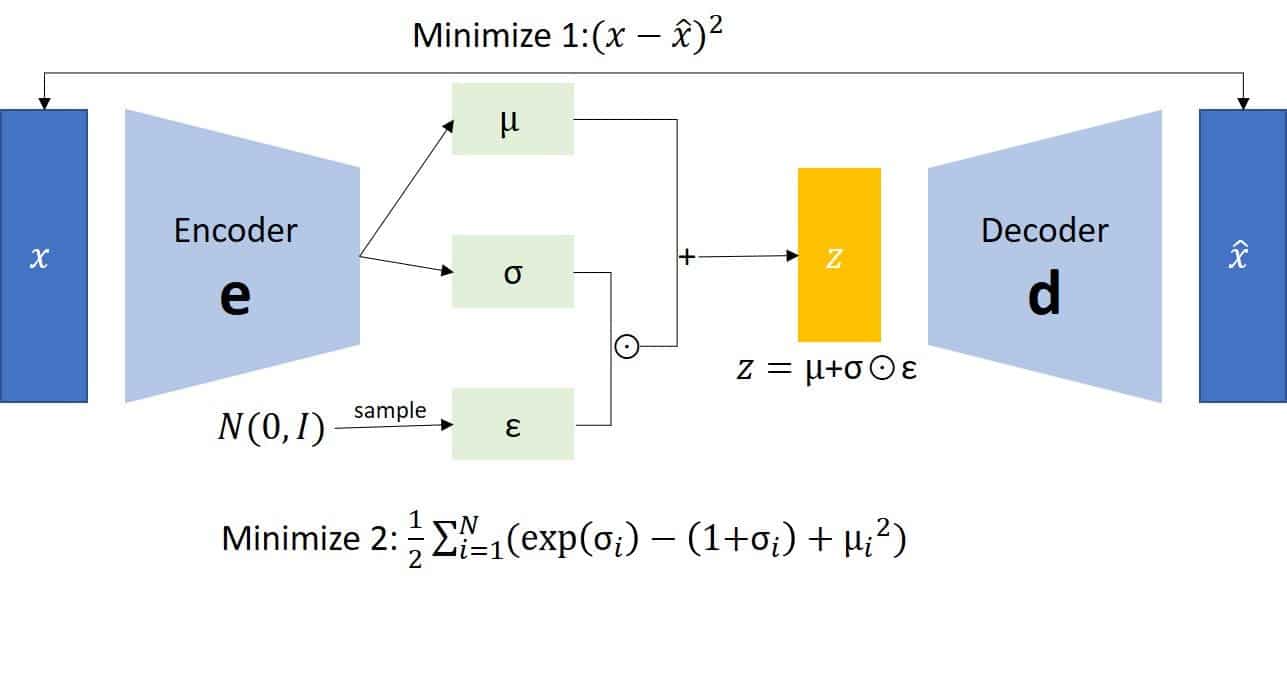Variational Autoencoders (VAE) are a type of artificial neural network used for learning generative models. They are a particular type of autoencoder, a model used to compress and decompress data, where the data is compressed into a latent space. The networks are used in fields such as computer vision, natural language processing, and computer graphics, and they have become increasingly popular in generative deep learning, which uses them for image and text synthesis.
VAEs combine elements of variational inference with neural networks and autoencoders. The basic idea of a variational autoencoder is to use a neural network to encode an input into a set of latent variables, typically referred to as a “code.” Then, the model uses the code to decode the input and generate an output (e.g., a new image or text). The idea is to create a generative model that can reconstruct the original input, but also generate new samples from the same data distribution.
The training process of a VAE consists of two phases. The first phase is an encoder, which reduces the input into a latent space representation. The second stage is a decoder, which is used to reconstruct an input. During the training process, the model learns to minimize the difference between the generated data and the original input.
VAEs have numerous advantages and practical applications. They can be used for sample generation, unsupervised feature learning, and dimensionality reduction. Furthermore, VAEs can generate data that is both realistic and dissimilar, making them a powerful tool for data augmentation.
As VAEs are still relatively new, the field is quickly evolving and new uses for this model are being developed. However, it is important to note that there are some drawbacks. For instance, the model can be slow to train and prone to instability, and may suffer from mode collapse (the tendency to produce similar samples with different inputs).
Despite these issues, VAEs remain a powerful tool in the field of generative deep learning. They are an important part of the machine learning toolbox and can be used to create realistic datasets, improve feature learning, and explore the latent space of complex data distributions.






